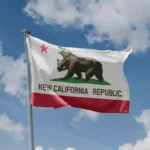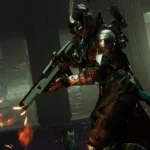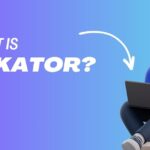Disney has long been a beacon of enchantment, bringing magical worlds to life and captivating audiences with timeless tales of good versus evil. While heroes and heroines often bask in the limelight, it’s the villains who add the necessary conflict and depth to these stories, making the triumphs of the protagonists all the more satisfying. Disney villains are a diverse and iconic group, each with unique characteristics and motivations that have left an indelible mark on popular culture. This article delves into the allure of Disney villains, exploring their origins, evolution, and the reasons behind their enduring popularity.
The Origins of Disney Villains
Disney’s tradition of creating memorable villains dates back to its earliest days. The first Disney villain to make a significant impact was the Evil Queen in “Snow White and the Seven Dwarfs” (1937). Inspired by the Grimm Brothers’ fairy tale, the Evil Queen’s vanity and envy set the standard for future Disney antagonists. Her transformation into a hag and her attempts to kill Snow White underscored the lengths to which Disney villains would go to achieve their goals.
Following the Evil Queen, Disney introduced a series of villains who became as beloved and memorable as the heroes they opposed. From the malevolent Maleficent in “Sleeping Beauty” (1959) to the wickedly humorous Cruella de Vil in “101 Dalmatians” (1961), each villain brought a unique blend of charm, menace, and complexity to the screen.
The Evolution of Disney Villains
As Disney animation evolved, so did its villains. Early villains were often one-dimensional, embodying pure evil without much backstory or motivation beyond their desire to thwart the hero. However, over time, Disney began to create more nuanced characters with complex motivations and relatable traits.
In the 1990s, Disney’s Renaissance era brought a new wave of villains who were not just evil but also multifaceted and charismatic. Scar from “The Lion King” (1994) is a prime example. Voiced by Jeremy Irons, Scar’s cunning and jealousy are driven by a deep sense of inadequacy and a desperate desire for power. His manipulation of Simba and the tragic death of Mufasa make him one of Disney’s most compelling villains.
Another standout from this era is Hades from “Hercules” (1997). Unlike previous villains, Hades is more comical and sarcastic, providing a refreshing contrast to the stoic and heroic Hercules. Voiced by James Woods, Hades’ quick wit and fiery temper make him both entertaining and formidable.
The Psychological Depth of Disney Villains
One of the reasons Disney villains have such a lasting impact is their psychological depth. Many villains are driven by relatable emotions such as jealousy, greed, and a desire for revenge. This makes them more human and, paradoxically, more frightening.
Take, for example, Ursula from “The Little Mermaid” (1989). Ursula’s desire for power and her resentment towards King Triton stem from her belief that she has been wronged and overlooked. Her manipulation of Ariel and her cunning use of contracts and deals highlight her intelligence and strategic thinking.
Similarly, Mother Gothel from “Tangled” (2010) is driven by a fear of aging and losing her beauty. Her twisted form of love for Rapunzel, whom she keeps locked away to harness the power of her magical hair, adds a layer of complexity to her character. Gothel’s manipulative and controlling nature makes her one of Disney’s most psychologically intriguing villains.
The Role of Villains in Disney’s Narrative Structure
Villains play a crucial role in Disney’s narrative structure, serving as the catalyst for the hero’s journey. They create the conflict that the hero must overcome, providing the stakes and tension that drive the story forward. Without villains, the hero’s journey would lack the necessary obstacles and challenges that make their eventual triumph meaningful.
For instance, in “Beauty and the Beast” (1991), Gaston serves as a foil to the Beast. While the Beast undergoes a transformation and learns to love, Gaston remains vain and self-centered, ultimately leading to his downfall. His unrelenting pursuit of Belle and his desire to kill the Beast create the climactic conflict that brings the story to its resolution.
In “Aladdin” (1992), Jafar’s ambition and desire for power contrast sharply with Aladdin’s humble beginnings and good-hearted nature. Jafar’s use of dark magic and manipulation highlights the themes of greed and corruption, making Aladdin’s victory all the more satisfying.
The Iconic Designs of Disney Villains
Disney villains are not only memorable for their actions and personalities but also for their distinctive designs. The visual appearance of a villain often reflects their character and enhances their menacing presence.
Maleficent, with her horned headdress and flowing black robes, embodies the archetypal image of an evil sorceress. Her transformation into a dragon in the climactic battle with Prince Phillip cements her status as one of Disney’s most iconic villains.
Cruella de Vil’s stark black-and-white hair and extravagant fur coats make her instantly recognizable. Her obsession with fashion and her ruthless pursuit of Dalmatian puppies highlight her vanity and cruelty.
The design of Scar, with his lean frame and distinctive scar over one eye, emphasizes his cunning and treachery. His dark mane and slinking movements set him apart from the noble and powerful Mufasa.
The Cultural Impact of Disney Villains
Disney villains have had a profound impact on popular culture, inspiring countless adaptations, merchandise, and even their own stories. The popularity of villains has led to the creation of spin-offs and reinterpretations that explore their backstories and motivations.
The film “Maleficent” (2014) reimagines the story of “Sleeping Beauty” from the perspective of its villain. Starring Angelina Jolie, the film delves into Maleficent’s past, providing a more sympathetic portrayal of the character and exploring the reasons behind her transformation into a villain.
Similarly, the “Descendants” franchise, which began with a film in 2015, follows the lives of the teenage children of Disney’s most infamous villains. This series explores themes of redemption and identity, showing that even the offspring of villains can choose their own path.
Disney villains have also become a staple of theme parks and merchandise. Attractions like “Villains Grove” at Disneyland and special events like “Disney Villains After Hours” at Walt Disney World celebrate these characters, allowing fans to immerse themselves in the darker side of Disney magic.
The Appeal of Disney Villains
The enduring appeal of Disney villains can be attributed to several factors. First, their larger-than-life personalities and dramatic flair make them captivating and memorable. Villains often have the best lines and the most memorable songs, allowing them to steal the spotlight.
Second, villains embody the darker aspects of human nature, making them fascinating to explore. Their motivations, whether driven by jealousy, revenge, or a thirst for power, reflect real human emotions and desires. This complexity makes them more relatable and interesting than one-dimensional heroes.
Third, villains provide a sense of catharsis. By watching heroes overcome villains, audiences experience a sense of justice and satisfaction. The defeat of a villain symbolizes the triumph of good over evil, reinforcing moral values and offering hope.
Modern Takes on Disney Villains
In recent years, Disney has continued to evolve its portrayal of villains, offering more nuanced and sympathetic interpretations. This trend reflects a broader shift in storytelling that recognizes the complexity of human nature and the blurred lines between good and evil.
For example, “Frozen” (2013) presents a more ambiguous villain in the character of Hans. Initially portrayed as a charming prince, Hans’ true intentions are revealed later in the film. This twist challenges the traditional notion of the villain and highlights the dangers of deception and betrayal.
In “Zootopia” (2016), the villain is not a single character but rather the prejudice and fear that permeate society. The film addresses issues of racism and discrimination, showing how these societal ills can create conflict and division. This more sophisticated approach to villainy reflects a growing awareness of the complexities of real-world issues.
The Future of Disney Villains
As Disney continues to produce new films and expand its universe, the role of villains is likely to remain central. Future villains may continue to challenge traditional archetypes, offering more diverse and multifaceted characters. With the rise of streaming services and the potential for serialized storytelling, Disney has the opportunity to explore the backstories and motivations of its villains in greater depth.
The success of series like “Loki” (2021) on Disney+ demonstrates the audience’s appetite for complex and morally ambiguous characters. By delving into the psyche of villains and exploring their paths to villainy, Disney can create richer and more compelling narratives.
Conclusion
Disney villains have captivated audiences for decades, providing the conflict and tension that drive the stories of beloved heroes. From the early days of the Evil Queen to the modern reinterpretations of characters like Maleficent and Hades, Disney villains have evolved to become more complex and relatable. Their psychological depth, iconic designs, and cultural impact have cemented their place in the pantheon of memorable characters.
As Disney continues to innovate and explore new storytelling avenues, the future of Disney villains promises to be as enchanting and enthralling as their past. These characters, with their larger-than-life personalities and timeless appeal, will undoubtedly continue to capture the imagination of audiences for generations to come.







